Cajeta – Goat Milk Dulce De Leche
Cajeta, Mexican dulce de leche made from goat milk, is subtly sweet with hints of vanilla and cinnamon. It takes patience to prepare it from scratch, but it’s worth the wait! You’ll end up with a creamy and smooth caramel-like sauce that is wonderful on ice cream, cakes, cookies, and more!
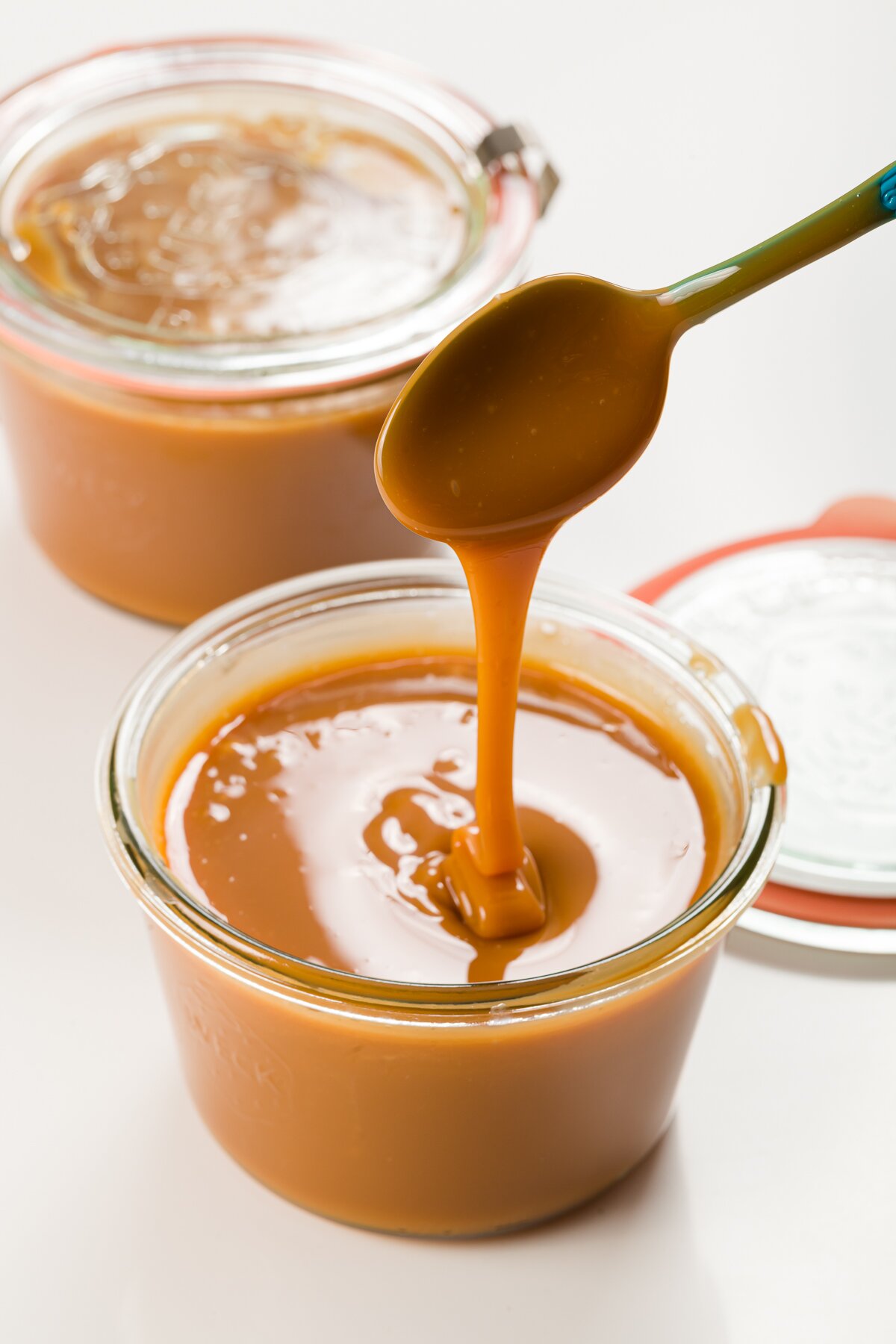
Estimated reading time: 6 minutes
Ingredients
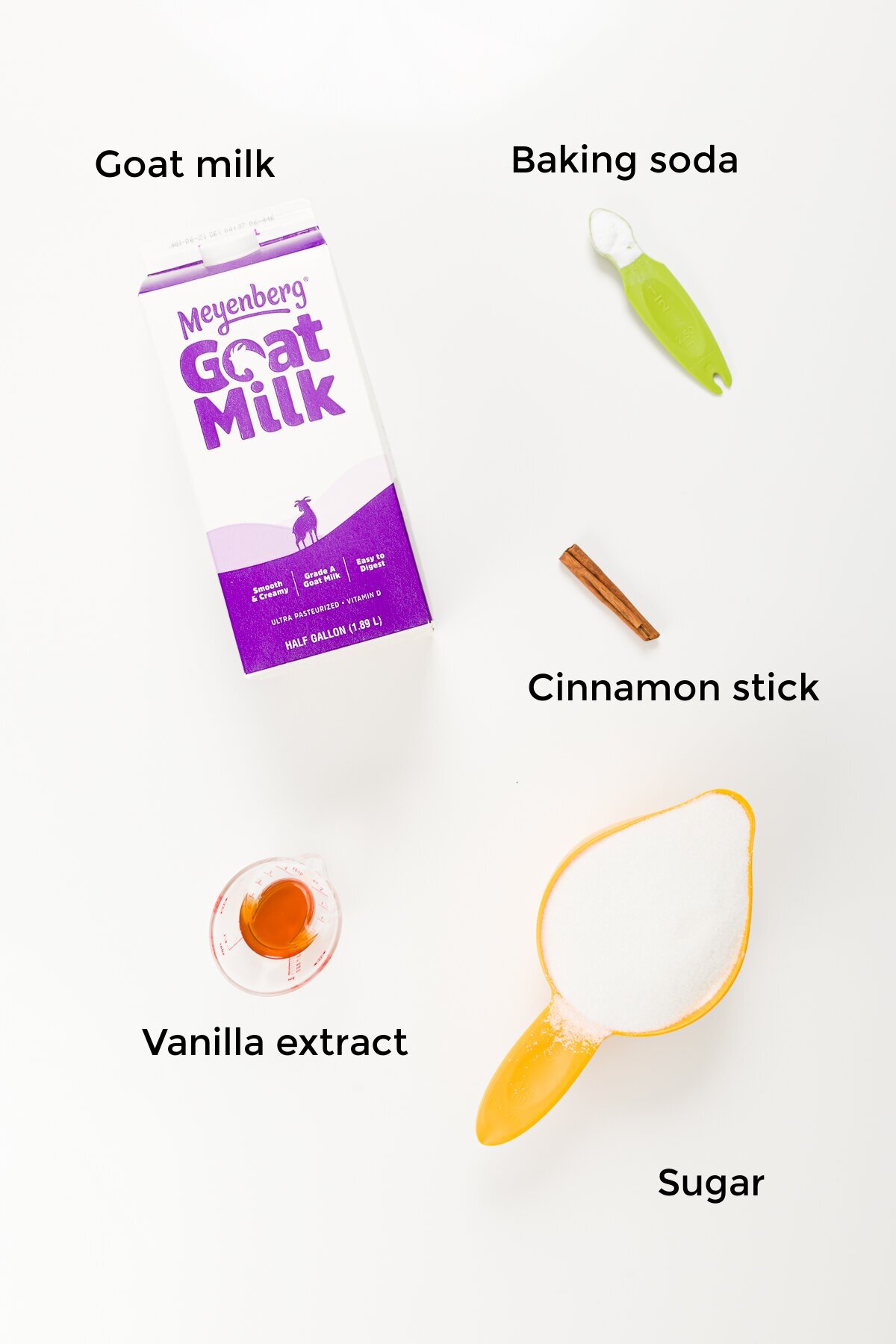
The most unique ingredient in cajeta is goat milk. Using goat milk instead of cow’s milk gives cajeta just a bit of sharpness that perfectly balances the sweetness of the sugar.
Goat milk can be hard to find in U.S. grocery stores, but you can always buy it in powdered form on Amazon [paid link]. When purchasing, make sure you buy whole goat milk.
The recipe also requires vanilla extract, sugar, a cinnamon stick, baking soda, and water. You may think of baking soda as a leavening agent and wonder why it’s used at all. In this case, it aids in caramelization and helps to prevent lumps. (See the FAQ at the end of this post if you want the full, geeky explanation.)
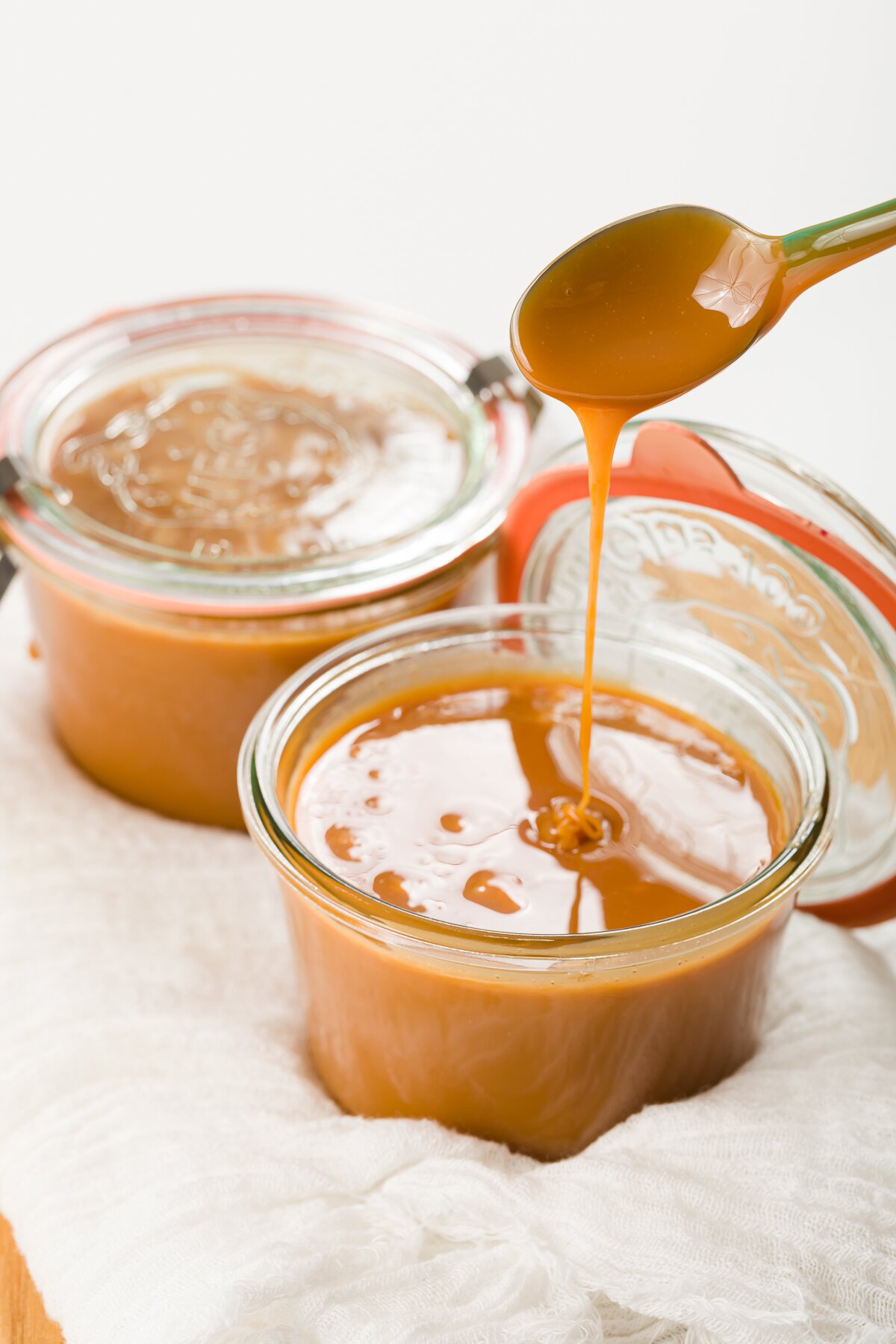
How It’s Made
Combine goat milk, a cinnamon stick, vanilla, and sugar in a heavy-bottomed pot on medium-low heat.
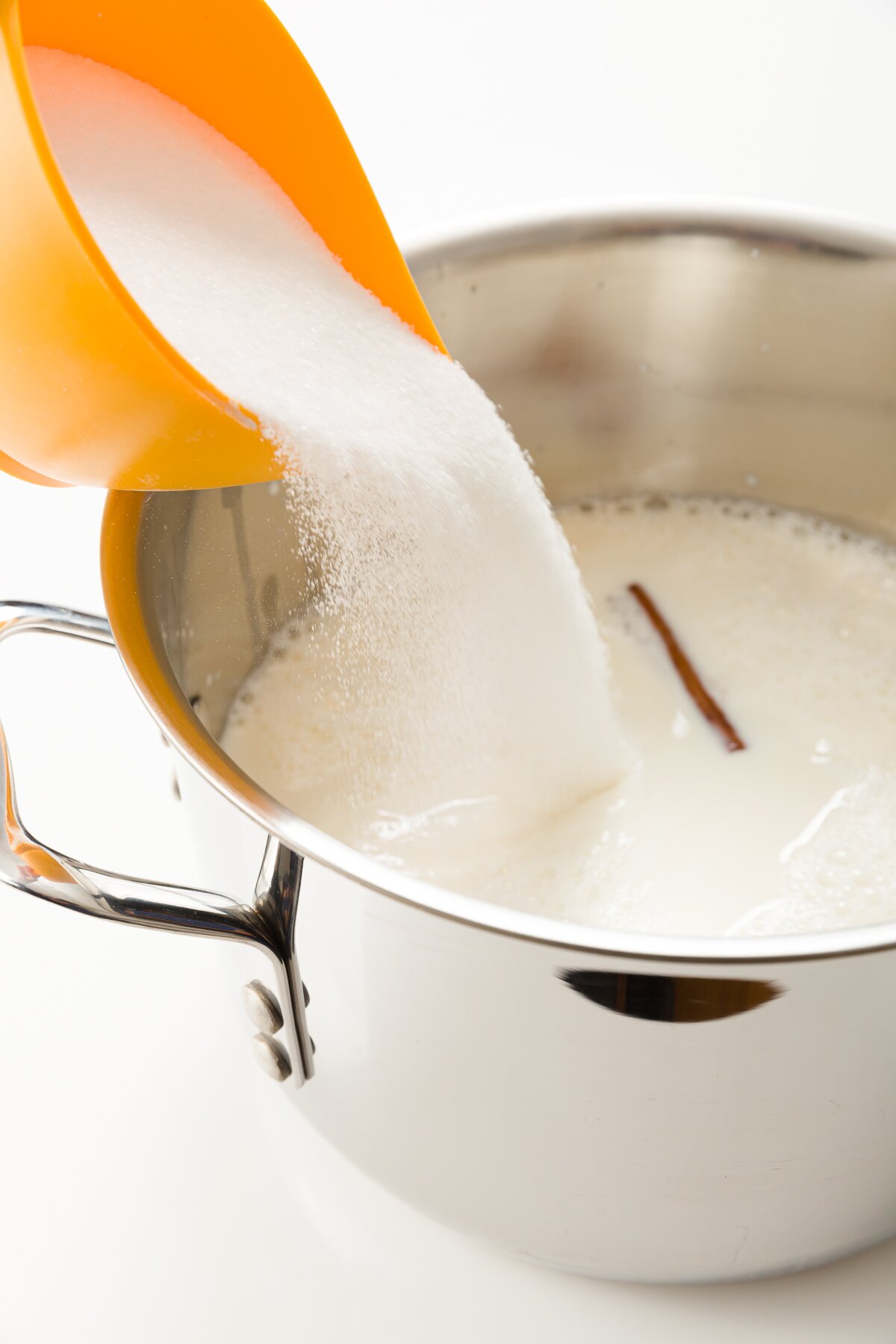
Simmer and stir periodically with a non-reactive (wooden or stainless steel) spoon until the sugar is completely dissolved, which should take about ten minutes. Periodically scrape the bottom of the pot well to make sure all of the sugar gets incorporated.
Tip: Choose a pot that is larger than you think you’ll need just in case the mixture starts to bubble up. You don’t want to clean burnt sugar off of the stove top.
Next, dissolve baking soda in water.
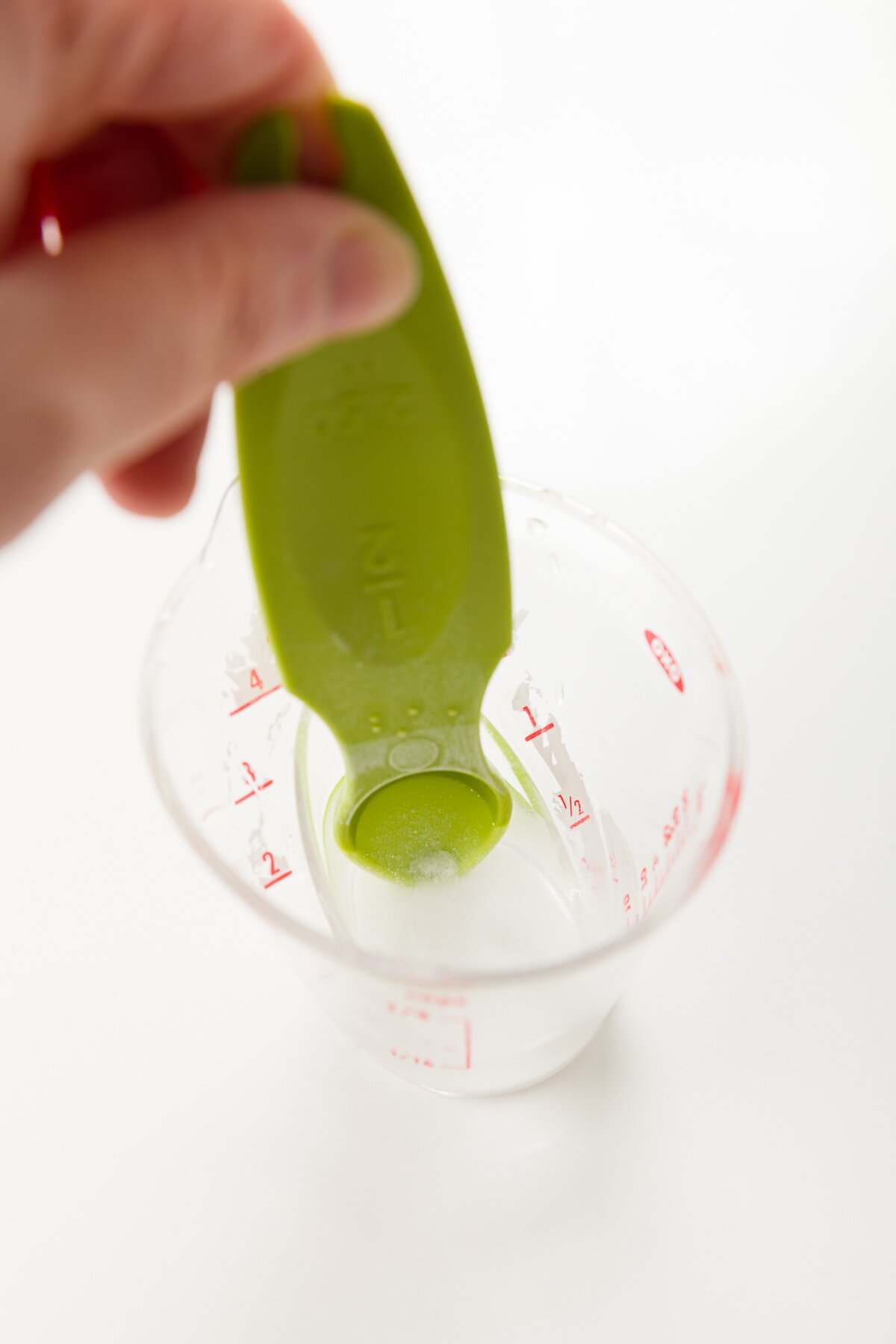
Add that to the simmering milk/sugar mixture.
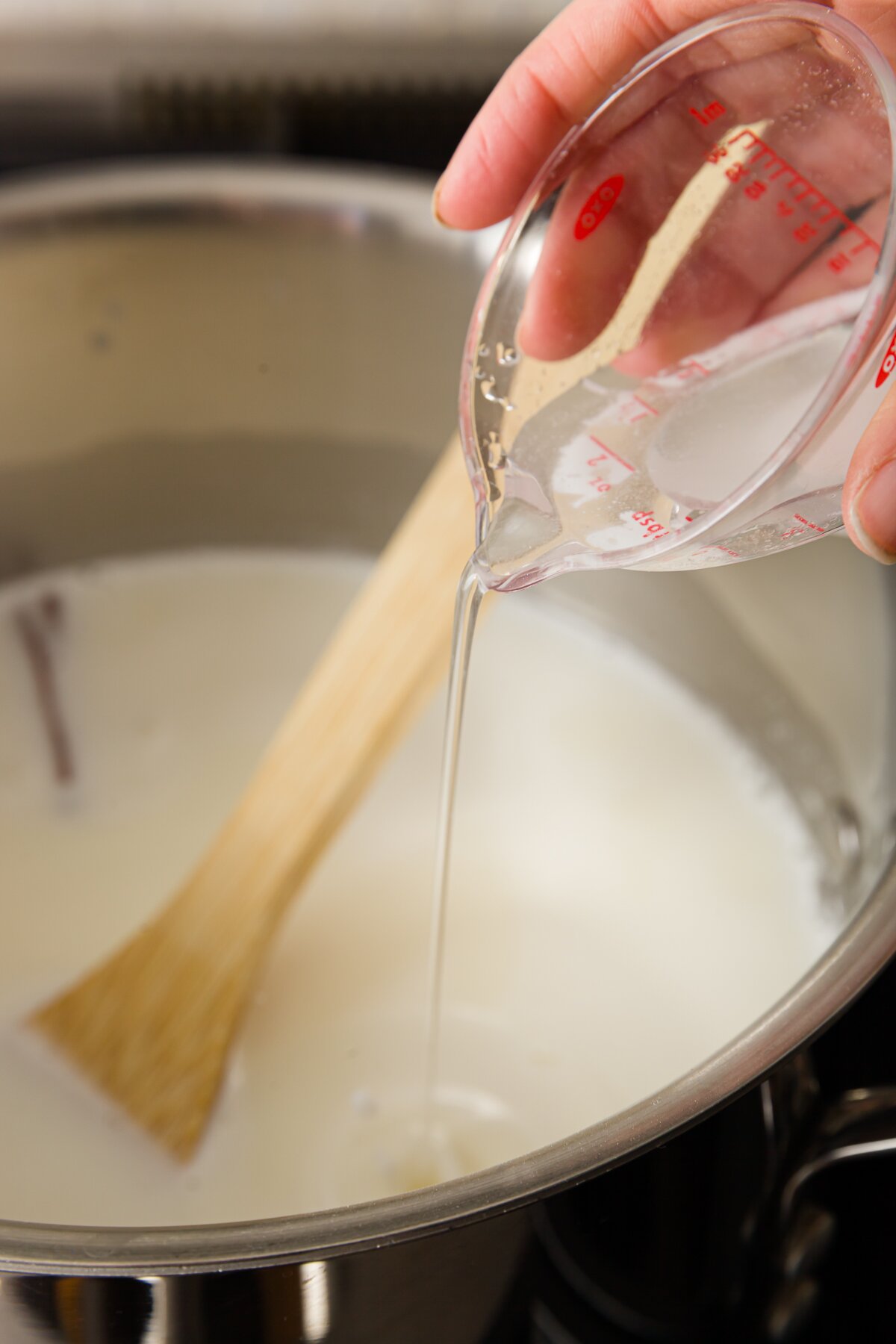
Reduce the heat to low and keep simmering for about three hours, stirring periodically. You want the volume to be roughly 1/4 of what you started with.
Tip: The mixture will thicken as it cools and it will bubble more rapidly. Do not try to speed things up by turning up the heat; that will most likely cause a burnt mess. I recommend that you stir constantly for the last 30 minutes of cooking.
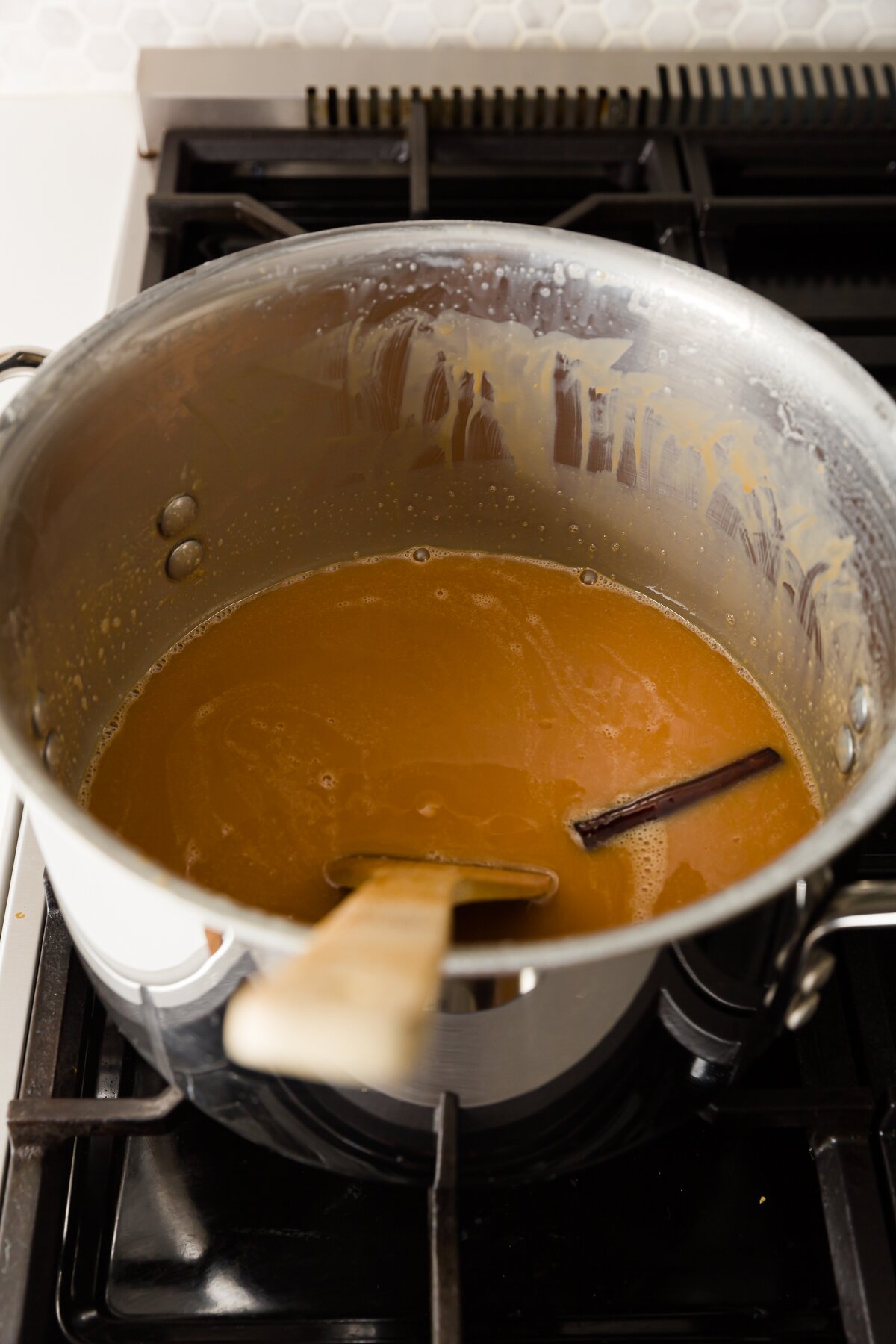
When it coats the back of a spoon, remove the pot from the heat and cool to room temperature.
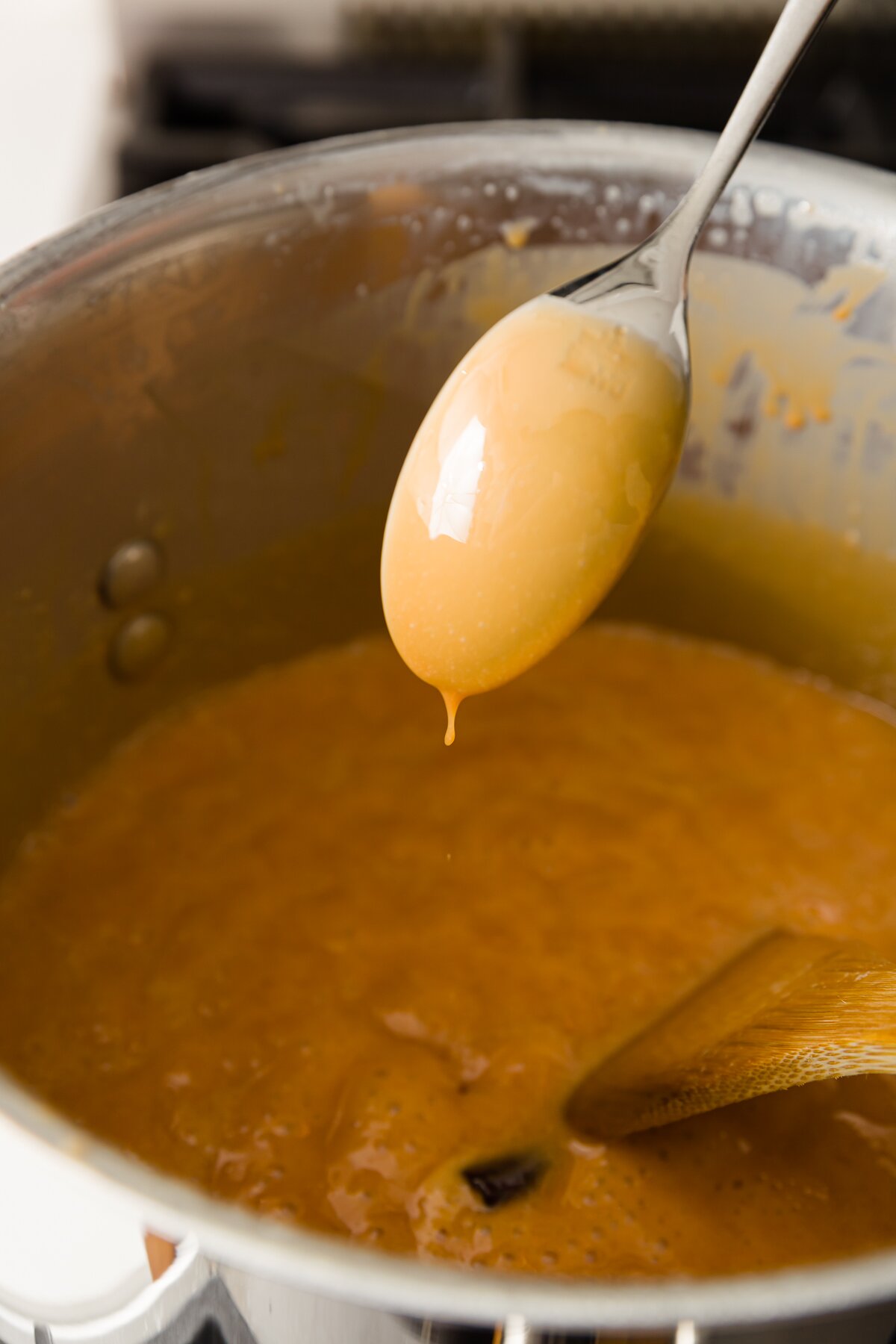
Transfer to jars and refrigerate until you’re ready to use it.
Expert Tips and FAQs
It is so sweet and creamy that it would be hard to find something it doesn’t go with. But since it is a Mexican condiment, you might think about using it with traditional Mexican desserts, too. I recommend you try it with churros, crepes, on toast instead of jam, on top of ice cream, in your coffee, alongside strawberries or other fruit, and as a filling or poured glaze on cakes, cookies, and the like. In short, you can use cajeta wherever you would normally use dulce de leche.
Keep cajeta refrigerated until you’re ready to use it. It should last for several months.
Adding baking soda to the milk/sugar mixture may seem like a small detail that you can just ignore, but it will make cooking cajeta a whole lot easier. Boiling milk by itself causes the proteins in it to coagulate, forming lumps. When the milk is more acidic, like goat milk, the lumps get even worse. (This is why most cheese making starts by heating milk and adding an acidic ingredient of some kind). Adding baking soda raises the pH of the milk, which helps the proteins relax and keeps lumping to a minimum.
The other reason to add baking soda is that it will help your recipe develop a strong, sweet flavor. When proteins and sugars cook together for a while, they undergo the Maillard reaction – the same process that makes a seared steak so much tastier than a boiled one. Getting this reaction going in your pot is the key to the most fantastic-tasting cajeta, and it is more likely to happen if you have made your mixture less acidic by adding baking soda.
You can use an immersion blender to completely blend the lumps back into the rest of the liquid while it’s still warm.
It’s your kitchen, so of course you can do whatever you want. There is no shortage of recipes for cajeta without any added spice. That said, the overwhelming tendency in Mexico is to throw cinnamon in it (like horchata!), so don’t be surprised if somebody used to this condiment tries yours and laments the loss of its spiciness.
Cajeta is made with goat milk instead of cow milk and it is usually spiced with cinnamon (and sometimes rum or other spirits).
Related Recipes
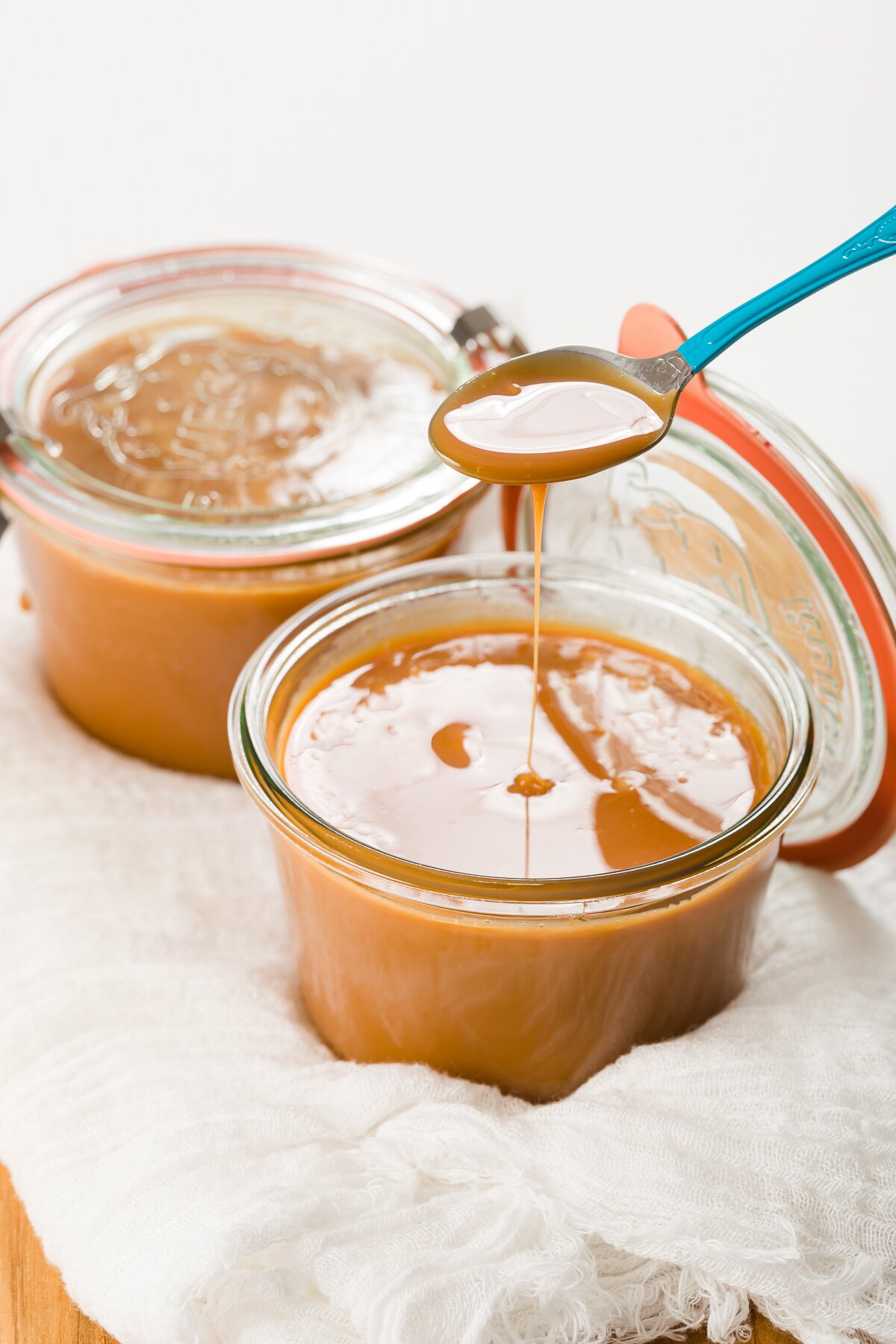
- How to make dulce de leche
- Dulce de leche frosting
- Dulce de leche cake
- Butterscotch sauce
- Whiskey sauce
- Mexican chocolate sauce
Cajeta – Mexican Goat Milk Dulce De Leche
Ingredients
- 8 cups goat milk 2 quarts
- 1 tablespoon vanilla extract
- 1 cinnamon stick
- 2 cups granulated sugar
- 1/2 teaspoon baking soda
- 1 tablespoon water
Instructions
- In a heavy-bottomed pot on medium-low heat, combine goat milk, vanilla extract, cinnamon stick, and sugar. Simmer and stir periodically with a wooden spoon until sugar is dissolved, about ten minutes. Be sure to scrape the bottom of the pot well so that no sugar sticks. Tip: Choose a pot that is larger than you think you'll need just in case the mixture starts to bubble up. You don't want to clean burnt sugar off of the stove top.
- Dissolve baking soda in water and add to milk/sugar mixture. This helps prevent lumps and aids in caramelizing.
- Reduce heat to low and cook for three hours, stirring periodically, or until the mixture has thickened and coats the back of a spoon. The volume should be roughly 1/4 of what you started with. Note that as the volume decreases, the mixture will come to more of a boil and you'll need to stir more often. For the last half hour, I recommend stirring constantly.
- Remove from heat and discard the cinnamon stick. Cool and transfer to jars and refrigerate.
Loading comments...